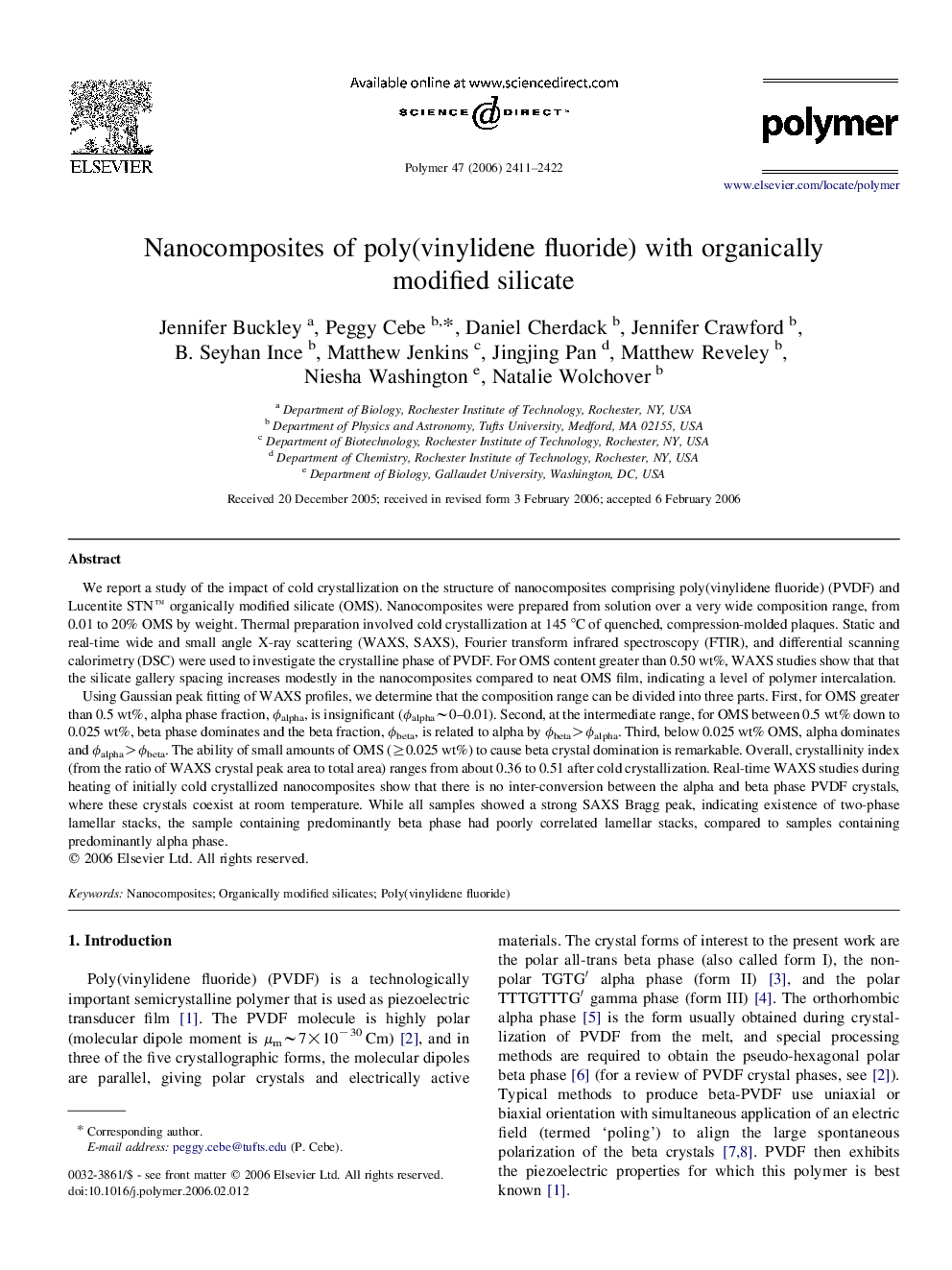| Article ID | Journal | Published Year | Pages | File Type |
|---|---|---|---|---|
| 5190989 | Polymer | 2006 | 12 Pages |
Abstract
Using Gaussian peak fitting of WAXS profiles, we determine that the composition range can be divided into three parts. First, for OMS greater than 0.5 wt%, alpha phase fraction, Ïalpha, is insignificant (Ïalphaâ¼0-0.01). Second, at the intermediate range, for OMS between 0.5 wt% down to 0.025 wt%, beta phase dominates and the beta fraction, Ïbeta, is related to alpha by Ïbeta>Ïalpha. Third, below 0.025 wt% OMS, alpha dominates and Ïalpha>Ïbeta. The ability of small amounts of OMS (â¥0.025 wt%) to cause beta crystal domination is remarkable. Overall, crystallinity index (from the ratio of WAXS crystal peak area to total area) ranges from about 0.36 to 0.51 after cold crystallization. Real-time WAXS studies during heating of initially cold crystallized nanocomposites show that there is no inter-conversion between the alpha and beta phase PVDF crystals, where these crystals coexist at room temperature. While all samples showed a strong SAXS Bragg peak, indicating existence of two-phase lamellar stacks, the sample containing predominantly beta phase had poorly correlated lamellar stacks, compared to samples containing predominantly alpha phase.
Related Topics
Physical Sciences and Engineering
Chemistry
Organic Chemistry
Authors
Jennifer Buckley, Peggy Cebe, Daniel Cherdack, Jennifer Crawford, B. Seyhan Ince, Matthew Jenkins, Jingjing Pan, Matthew Reveley, Niesha Washington, Natalie Wolchover,
